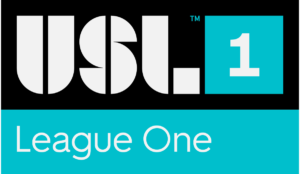USL League One will launch later this month, bringing a new Division III circuit to United States soccer. While USL League One debuts this season with a slate of 10 teams, including some in markets that could prove ripe for professional soccer, it will have to continue pushing for future growth.
Plans for USL League One—often referred to then as USL DIII—were announced in March 2017, with the league originally described as an initiative to bring professional soccer to cities between 150,000 and a million in population. Though a broad mandate, the standard was mainly intended as a way to cover markets that are perhaps too small for Division II.
Ultimately, that has resulted in a league with a geographical range spanning from Toronto to Tucson. USL League One’s inaugural season will include new clubs in locales such as Greenville, SC (Greenville Triumph SC); Madison, WI (Forward Madison FC); Lansing, MI (Lansing Ignite FC); and Chattanooga, TN (Chattanooga Red Wolves SC). In those cases, the league is reaching markets that have solid track records in supporting sports at the minor league and/or collegiate levels, but that might not be suited in the present for Division II USL Championship.
Additionally, USL League One has picked up two organizations that previously fielded teams in the former Premier Development League (now USL League Two) with FC Tucson and South Georgia Tormenta FC. Orlando City B, Toronto FC II, and Richmond Kickers are also charter members in USL League One after previously competing at the Division II level, while the FC Dallas-backed North Texas SC is also in the mix.
That slate will comprise the league’s 2019 campaign, but USL League One—which had at one point targeted a total of 14 clubs for its inaugural season—will look to continue growing in the coming years. Two clubs that formerly competed at the Division II level—Penn FC and Rochester Rhinos—are slated to field teams in USL League One starting in 2020 after taking hiatuses this season.
That gives USL League One a path to 12 teams next year but expect the league to push for further growth. It will likely try to prioritize expansion as a way to improve geographical balance, with the Midwest and West being logical targets in order to create natural travel partners with clubs such as Tucson, Madison, and Lansing. There could also be some MLS-owned club that could follow the path of Toronto and Orlando by slotting down to Division III, as USL Championship’s push to boost facilities and attendance totals could lead to some lower-performing clubs being weeded out.
Those are future considerations to keep an eye on as USL League One develops, but for now it is looking forward to its launch. Play will get underway with an opening weekend of action that begins on Friday, March 29, when South Georgia visits Greenville.
Image of Toyota Stadium, home of North Texas SC, courtesy FC Dallas.

